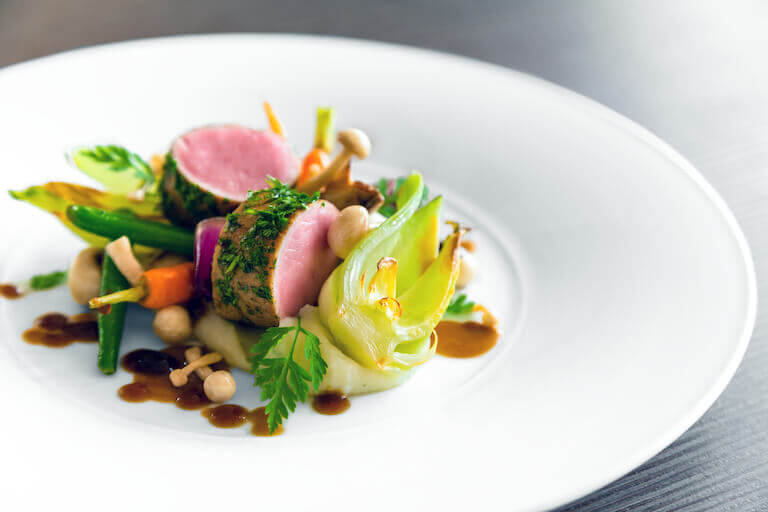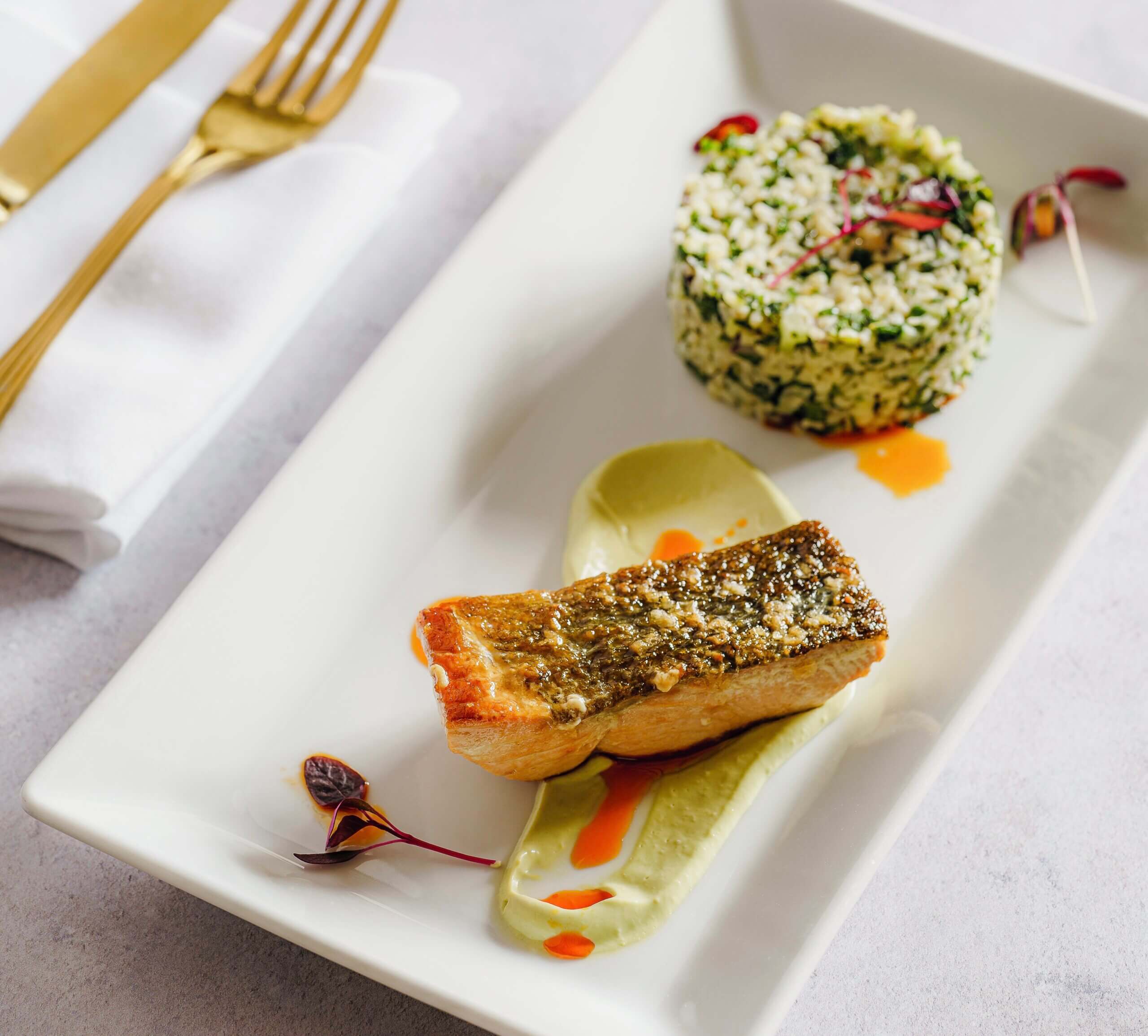The Art of Plating: Aesthetic Inspirations in Food
Food is not just sustenance; it is an experience. The very first connection we have with a dish is not its aroma or taste it is its appearance. The art of plating, therefore, is not simply about arranging food neatly on a plate. It is a deliberate craft that combines creativity, design principles, and cultural inspirations to transform a meal into an aesthetic experience. 
Plating is as much about storytelling as it is about nourishment. Every detail the shape of the plate, the balance of colors, the spacing, and even negative space guides how we perceive flavor before the first bite.
A Historical Glimpse into Food Presentation
Food presentation is not a modern invention. Ancient civilizations already understood the power of aesthetics in dining:
- Ancient Rome: Banquets were theatrical events where food was decorated with herbs, gold leaves, and elaborate sculptures made from sugar or dough.
- Japan: Kaiseki dining, a traditional multi-course meal, emphasizes seasonality and presentation. Food is arranged to mimic landscapes, with flowers, leaves, and natural textures highlighting the plate.
- French Haute Cuisine: In the 17th and 18th centuries, French chefs elevated plating into a fine art. Sauces, garnishes, and structured arrangements established the foundations of modern culinary aesthetics.
These traditions underline one truth: plating has always been about more than food. It is about culture, identity, and perception.
The Principles Behind Stunning Plating
Chefs across the world rely on certain design rules that mirror principles found in art and architecture. 
Some of the most important include:
- Balance and Proportion
- A plate should never feel overcrowded or too empty.
- Components need proportion proteins, vegetables, and starches should have harmony in size and quantity.
- Color and Contrast
- Bright greens, deep purples, golden browns color tells the story of freshness and variety.
- Contrast avoids monotony. For example, a seared salmon with charred asparagus and lemon zest creates a vibrant, appetizing composition.
- Texture and Height
- Smooth sauces, crisp garnishes, crunchy elements all contribute to visual and sensory intrigue.
- Height brings drama. A layered dish or vertical garnish creates movement that draws the eyes upward.
- Negative Space
- The empty parts of a plate are just as important as the filled parts. Too much food crammed together looks heavy, while open space creates elegance.
These are not strict rules but guiding elements. Great chefs often bend them to create surprise while maintaining visual coherence.
Plating Styles and Inspirations
Different plating styles have emerged as chefs experiment with both tradition and innovation.
- Classic Style: Protein at the center, sides surrounding it. A timeless, balanced arrangement used in many fine-dining settings.
- Minimalist Style: A focus on fewer components with wide open space. Clean, modern, and often influenced by Japanese design.
- Deconstructed Style: Instead of combining ingredients in a single bite, elements are separated to highlight individuality. This style encourages diners to engage with the food.
- Landscape Plating: Food arranged to resemble gardens, forests, or rivers. Often used in Nordic cuisine, it emphasizes a natural connection between ingredients and their environment.
- Geometric and Abstract: Influenced by modern art, where symmetry, circles, and lines dictate the placement of sauces and ingredients.
These approaches highlight how plating borrows from painting, sculpture, and design, turning food into an edible canvas.
The Psychological Impact of Presentation
Why does presentation matter so much? Research has shown that how food looks can change how it tastes. A study from Oxford University revealed that participants rated food as tasting better when presented artistically, even if the recipe was identical to a less structured version.
- Color affects appetite: Bright, fresh colors increase anticipation. A plate dominated by beige or gray tones, on the other hand, may seem dull.
- Shape influences flavor perception: Round arrangements are often perceived as sweeter, while angular ones can feel sharper or more savory.
- Order creates trust: Symmetry and neatness can signal cleanliness and quality.
Plating, therefore, is not a superficial detail. It actively influences our eating experience by engaging the mind before the palate.
Cultural Inspirations in Food Aesthetics
Different cultures bring unique philosophies into plating.
- Japanese Zen Aesthetics: Emphasizing harmony with nature, plating often mirrors seasonal landscapes, using leaves, flowers, or stones for presentation.
- French Elegance: Precision, structure, and refinement dominate. French plating often feels architectural, with layered and sauced compositions.
- Middle Eastern Abundance: In contrast, many Middle Eastern traditions emphasize generosity. Plates are filled richly, symbolizing hospitality and abundance.
- Nordic Minimalism: Scandinavian chefs highlight simplicity, rawness, and natural beauty, often letting wild herbs or rustic serving stones guide the presentation.
These inspirations show that plating is not a universal formula it reflects identity, geography, and philosophy.
Modern Trends in Plating
The 21st century has brought both experimentation and technology into plating. Some current trends include:
- Use of Edible Flowers and Microgreens: Adding bursts of color and delicate textures.
- Interactive Elements: Plates that involve the diner, such as pouring sauces tableside or assembling components.
- Sustainable Plating: Minimal waste, with garnishes and decorations that are fully edible.
- Playful Illusions: Dishes that look like one thing but taste like another such as a dessert shaped like a vegetable garden.
Social media has also influenced plating. Instagram and food photography push chefs to create visually striking dishes that can capture attention instantly. However, the best plating balances visual appeal with flavor integrity.
The Chef as an Artist
At its core, plating proves that a chef is not only a cook but also an artist. Unlike painting or sculpture, the artwork here is temporary it disappears the moment it is eaten. Yet this fleeting quality makes plating powerful. Each dish represents a moment in time, a personal expression, and a connection between chef and diner.
Chefs often draw from art, architecture, nature, and fashion for inspiration. Some reference Impressionist paintings in their use of color, while others mimic landscapes or geometric patterns. The plate becomes a stage, and the ingredients, the performers.
Conclusion
The art of plating transforms food from necessity to expression. It blends tradition with modernity, science with psychology, and aesthetics with flavor. A beautifully plated dish tells a story: it invites, excites, and elevates the act of eating into something memorable.
Plating is not about extravagance or showing off it is about respect for ingredients, care for the diner, and the belief that beauty and taste are inseparable. As culinary traditions evolve, plating will continue to be the bridge between art and appetite, reminding us that dining is never only about feeding the body, but also about nourishing the senses.































